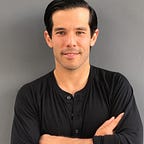Removing barriers to a project’s success
By answering your team’s burning questions.
What’s holding your team back?
For a project to be successful, there are a number of different barriers a team has to overcome. Some are very straight forward, while others are more difficult to identify.
The most nuanced are usually the qualitative questions about why a person does, or doesn’t take an action. These can rarely be measured quantitatively, and are often difficult to nail down.
Getting the right information
Imagine there’s project where you’re trying to increase the % of people who go from step A to step B.
The team knows the current conversion rate of that step. They know the existing flow, and the scope of the development needed to make the changes. They know how to run the A/B test and measure the results.
But one area where there isn’t always agreement is ‘the why’. ‘Why are people continuing from step A to step B?’. Or, even more important, ‘why are people not continuing from step A to B?’
When these questions aren’t answered, team members will make assumptions based on their personal experiences.
Here’s how it can go:
- Designer: The design is too busy.
- Engineer: The page isn’t loading fast enough.
- Product Manager: The value proposition isn’t clear enough.
- QA: There is an IE9 bug affecting the layout.
Everyone has a different assumption, creating a disconnect within the team about the right solution to the problem.
A great way to get everyone on the same page is to talk to your customers, and ask them about it. By asking your customers directly, you can learn the ‘whys’, satisfy your team’s curiosity, and get consensus on the problem that you need to solve.
Lessons learned from Lyfting
There are great examples of companies writing about how they talk to customers to do qualitative research. But I can give an example from a recent experience I had with Lyft, the peer-to-peer ride sharing service.
A few months ago, I became a Lyft driver. I went through their driver on-boarding process quickly, with very little friction. However, there was one step that stopped me in my tracks.
I had to take a photo of my car. This is what the passengers see each time I get matched to give them a ride.
The problem is that I park my car on the street. And living in San Francisco, it gets very dirty because of the fog that rolls in each night. And since I only wash my car every once in a while, I waited almost 2 weeks to complete that step.
If that’s a common problem, the Lyft product manager responsible for that step would probably benefit from knowing that information.
Also, I learned a passenger objection to using Lyft. A few people said they don’t use Lyft is because they ‘had a hard day’ and don’t want to talk to the Lyft driver. They assumed that if they use Lyft, they have to talk.
If that’s actually a problem, addressing it could potentially give Lyft a bump in rides requested.
Conclusion
Often times, the biggest barrier to a project’s success is not having the right information. Answering the ‘Whys’ associated with each project will answer your team’s questions, and bring everyone closer towards achieving the goals of the project.
If you’re interested in learning about customer development, check out these links:
- 26 Resources to Help You Master Customer Development Interviews
- Customer Development Interviews How-to: What You Should Be Learning
- Inside the Development Process of Our My Analytics App
- 95 Ways to find your first customers for customer development or your first sale
- The art of customer development conversation
- Entrepreneurs guide to customer development
- Have you tried talking to your customers
If this article was helpful, please recommend it below, or share it! Thanks!
